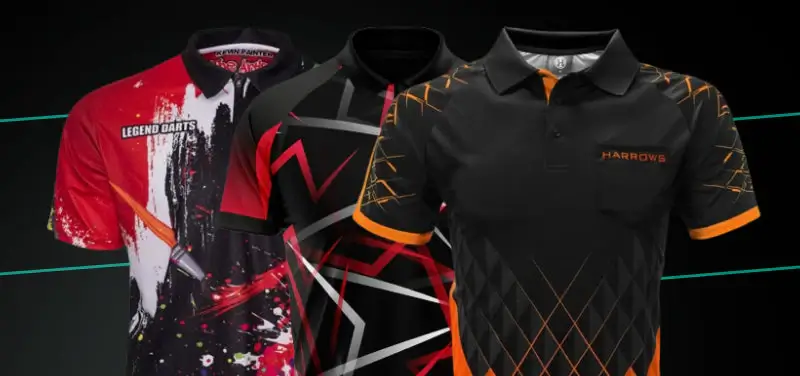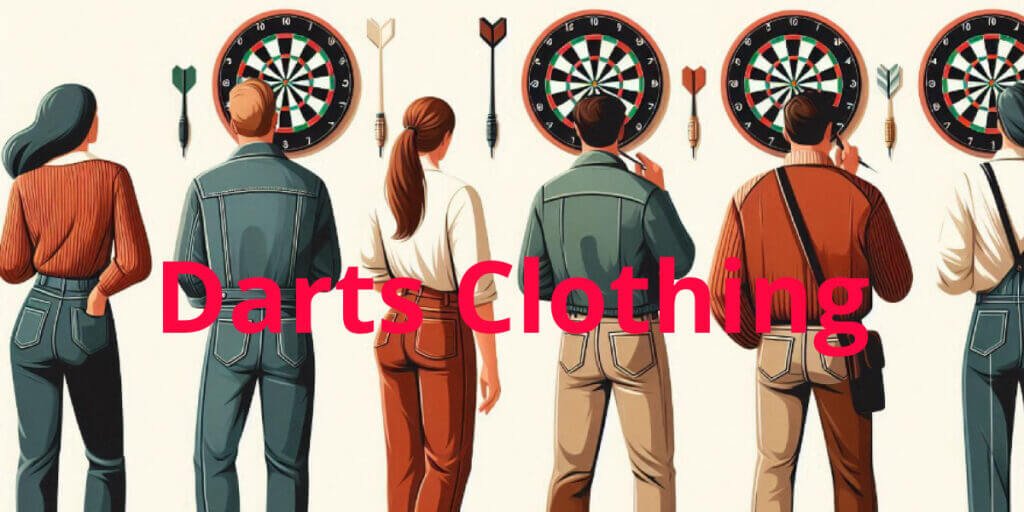When it comes to competing in darts, having the right darts clothing can make a significant difference—not just in terms of comfort, but also in how you present yourself on the oche. Whether you’re a seasoned pro or a newcomer to the game, understanding the dress code is essential. In this article, we’ll break down the rules and guidelines for darts clothing, ensuring you look sharp while hitting those bullseyes.
1. Understanding the Importance of Darts Clothing
Darts is a game that blends skill, precision, and style. While you might think that your throwing technique is the most important aspect of your game, your attire also plays a crucial role. Here’s why:
- Professionalism: When you dress appropriately for a competition, you show respect for the game and your fellow players. A well-put-together appearance can enhance the overall atmosphere of the event.
- Comfort: The right clothing can improve your performance. Darts requires focus and precision, and uncomfortable clothing can be a distraction.
- Team Spirit: If you’re part of a team, wearing matching attire can foster camaraderie and create a sense of unity.
2. General Darts Clothing Guidelines
While specific dress codes can vary by tournament or venue, there are general guidelines you should follow:
a. Collared Shirts
Most competitions require players to wear collared shirts. This standard helps maintain a professional appearance. Look for breathable fabrics that allow for movement and flexibility.
b. Comfortable Pants or Shorts
Choose pants or shorts that allow for ease of movement. Jeans can be restrictive, so consider wearing dress pants, slacks, or tailored shorts. Avoid overly casual attire like sweatpants, as they may not be deemed appropriate.
c. Closed-Toe Shoes

Footwear is an essential part of your outfit. Closed-toe shoes are typically required to ensure safety on the oche. Opt for comfortable shoes that provide good support, as you’ll be standing and moving around during your matches.
3. Color and Design Considerations
While adhering to the dress code is crucial, the color and design of your clothing can also impact your performance and how others perceive you.
a. Choose Colors Wisely
Bright colors can help you stand out, but be mindful of how they might affect your concentration. Some players prefer muted tones to maintain focus, while others thrive in vibrant outfits that express their personality.
b. Avoid Distracting Patterns
Complex patterns can be visually distracting, both for you and your opponents. Stick to solid colors or simple designs that won’t divert attention away from the game.
c. Team Uniforms
If you’re part of a team, wearing matching uniforms can enhance team spirit. Ensure that your team’s attire aligns with the competition’s dress code while reflecting your team’s identity.

4. Accessories and Additional Considerations
While clothing is crucial, don’t forget about accessories and other details that can complete your look.
a. Minimal Jewelry
If you wear jewelry, keep it minimal. Large or dangling earrings, heavy necklaces, or excessive rings can become distracting during your throws. A simple watch or a few small pieces can complement your outfit without causing interference.
b. Hats and Headgear
Some players choose to wear hats or headbands. Make sure they’re not too large or obstructive. Check the competition’s rules regarding headgear to ensure you’re in compliance.
c. Personal Branding
If you’re a sponsored player, you may want to wear clothing that showcases your sponsors’ logos. However, be sure to follow any guidelines set by the tournament organizers regarding branding.
5. What Not to Wear
To ensure you’re well-prepared for competition day, here’s a list of items to avoid:
- Casual Attire: Avoid wearing items like flip-flops, tank tops, or gym shorts, as they may not meet dress code requirements.
- Overly Baggy Clothing: While comfort is key, baggy clothes can hinder your movement and may look unprofessional.
- Graphic Tees: Unless they are part of a team uniform or explicitly allowed, steer clear of shirts with large graphics or logos.
6. Check the Tournament’s Specific Rules
Every tournament or venue may have its own specific dress code, so always check the rules beforehand. This information is usually available on the tournament’s website or event page.
a. Professional Leagues vs. Casual Competitions
Professional leagues often have stricter dress codes compared to casual competitions. For example, the Professional Darts Corporation (PDC) has clear guidelines that require players to wear collared shirts and appropriate footwear.
b. Local Tournaments
Local tournaments may have more relaxed rules, but it’s still essential to maintain a respectable appearance. If in doubt, reach out to the organizers for clarification.
7. Preparing for Competition Day
On the day of your competition, take a few extra steps to ensure you’re dressed appropriately and ready to perform.
a. Lay Out Your Outfit
The night before the competition, lay out your clothing. This gives you a chance to double-check that everything fits well and meets the dress code.
b. Prioritize Comfort
Make sure your outfit is comfortable. You’ll want to focus on your game, not adjusting your clothing. If you’re unsure about a particular piece, wear it during practice to see how it feels.
c. Grooming Matters
Personal grooming is also an important aspect of your overall appearance. Make sure your hair is neat, and if you wear facial hair, ensure it’s well-groomed.
8. Conclusion for Darts Clothing
Dressing appropriately for darts competitions is more than just about looking good; it’s about respecting the game, feeling comfortable, and performing your best. By adhering to the dress code and choosing your attire thoughtfully, you can enhance your experience on the oche and demonstrate your commitment to the sport. Whether you’re competing at a local pub tournament or a professional event, remember that your clothing plays a vital role in your overall performance and presence.
So, next time you step up to throw, dress to impress, and let your outfit reflect your passion for the game!





